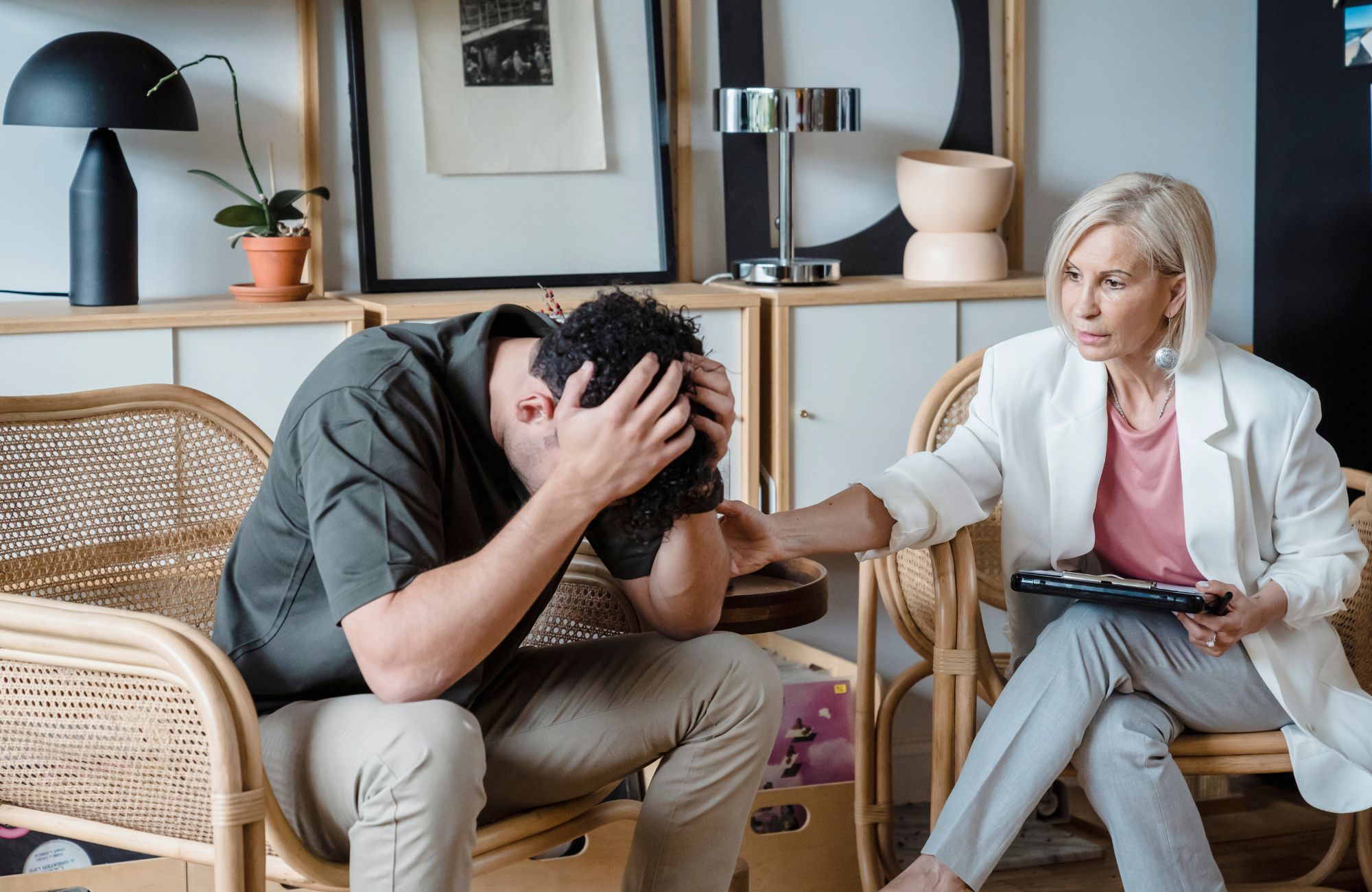Nearly 1 in 8 adults in the United States struggles with depression, but many don’t realize when it has become serious enough to need more intensive help. Outpatient therapy is effective for many, but when symptoms worsen or do not improve, inpatient treatment can offer the structure and support needed to turn things around.
Inpatient care is not only for crisis situations. It can be a crucial step toward healing when depression begins to interfere with daily life, relationships, and overall well-being. This guide will help you understand when it is time to consider inpatient treatment, what it involves, and how it can support lasting recovery.
Understanding Depression: More Than Just Sadness
Major depressive disorder affects over 21 million adults in the US alone. It’s a persistent mental health condition that goes well beyond temporary feelings of sadness or disappointment. Clinical depression involves symptoms that interfere with your ability to work, sleep, study, eat, and enjoy life.
Common Depression Symptoms
- Persistent sadness or emptiness
- Lost interest in activities you once enjoyed
- Significant weight or appetite changes
- Sleep disturbances (too much or too little)
- Fatigue and low energy
- Difficulty concentrating or making decisions
- Feelings of worthlessness or guilt
- Suicidal thoughts or behaviors
Several types of depression might require specialized treatment:
- Persistent depressive disorder lasts for two years or more with chronic, long-term symptoms.
- Seasonal affective disorder occurs during specific times of year, typically fall and winter.
- Postpartum depression affects new mothers and can interfere with caring for their baby.
- Treatment-resistant depression occurs when standard treatments haven’t provided adequate relief.
The key difference between regular sadness and clinical depression is duration, intensity, and impact on daily life. When depression affects your ability to function or poses safety risks, it’s time to consider intensive treatment options.
What is Inpatient Therapy for Depression?
Inpatient treatment provides 24/7 medical supervision and intensive therapy in a residential setting. Unlike outpatient treatment, where you attend therapy sessions once or twice a week, inpatient programs offer comprehensive care with multiple therapy sessions daily, medication management, and constant support.
Inpatient depression treatment centers create a structured, therapeutic environment away from daily stressors. You’ll work with a multidisciplinary team including psychiatrists, therapists, nurses, and social workers who specialize in treating severe depression and other mental health concerns.
Types of Inpatient Programs
- Acute Psychiatric Hospitalization (3 to 14 days): Designed for crisis situations, this short-term stay provides 24/7 supervision, safety monitoring, and immediate stabilization for severe symptoms like suicidal thoughts or psychosis.
- Residential Treatment Centers (30 to 90 days or more): These live-in programs offer structured, long-term care with daily therapy, medication management, and support for individuals with severe or treatment-resistant depression.
- Partial Hospitalization Programs (PHPs): Partial hospitalization offers full-day treatment including therapy and psychiatric care, while allowing you to return home at night. This is often used as a step-down from inpatient care.
The treatment approach typically combines evidence-based therapies like cognitive behavioral therapy (CBT) and dialectical behavior therapy (DBT) with medication management, group therapy, family therapy, and holistic treatments.
Research Shows Inpatient Treatment Works
A five-year study of 574 patients showed that inpatient depression treatment can lead to lasting improvement. Most patients experienced a drop in depression severity from severe to mild, and over half achieved complete remission.
The study also found that 70 percent maintained their progress six months after discharge. Psychotherapy stood out as the most impactful part of treatment, far more than medication alone. These findings highlight the powerful and lasting benefits of inpatient care for those facing severe or treatment-resistant depression.
Signs You May Need Inpatient Treatment
Recognizing when to seek treatment is crucial for recovery. Consider inpatient therapy for depression if you’re experiencing:
Immediate Safety Concerns:
- Suicidal thoughts, plans, or attempts
- Self-harm behaviors
- Inability to ensure your personal safety
- Psychotic symptoms like hallucinations
Treatment Resistance:
- Failed multiple outpatient therapy attempts
- Medication hasn’t helped despite trying several options
- Chronic depression lasting years without improvement
- Frequent psychiatric emergency visits
Severe Functional Impairment:
- Unable to work, attend school, or maintain relationships
- Neglecting basic self-care and hygiene
- Significant weight loss or gain
- Substance abuse to cope with depression
Co-occurring Disorders:
- Depression combined with addiction
- Eating disorders alongside depression
- Anxiety disorders complicating treatment
- Other mental health issues requiring specialized care
When depression symptoms interfere with your daily life to this degree, intensive treatment becomes necessary. The structured environment and comprehensive care of inpatient programs can provide the support needed for recovery.
What Happens During Inpatient Treatment?
Your treatment plan begins with a comprehensive diagnostic assessment covering your medical history, current symptoms, and treatment goals. The team creates an individualized approach based on your specific needs and circumstances.
Daily Structure:
- Morning medication and breakfast
- Individual therapy sessions (2-3 times per week)
- Group therapy focusing on specific skills
- Psychiatric appointments for medication management
- Holistic therapies like art, music, or recreational therapy
- Family therapy sessions when appropriate
- Evening reflection and personal time
Core Treatment Methods
Evidence-based therapies form the foundation of treatment. Cognitive behavioral therapy helps you identify and change negative thought patterns. Dialectical behavior therapy teaches emotional regulation and coping skills. Individual therapy provides personalized support, while group sessions offer peer connection and shared learning.
Medication management ensures you receive appropriate psychiatric medications with careful monitoring for effectiveness and side effects. Many people find the combination of therapy and medication most effective for treating depression.
Holistic Approaches
Treatment programs often include complementary therapies like mindfulness meditation, yoga, exercise therapy, and creative arts. These approaches address the whole person—mind, body, and spirit—supporting comprehensive healing.
The goal is to provide skills and strategies you can use long after leaving treatment. You’ll learn healthy coping mechanisms, stress management techniques, and ways to maintain your mental health in daily life.
Depression Treatment Duration and Levels of Care
Inpatient programs vary in length based on individual needs and symptom severity. Crisis stabilization typically lasts 3 to 7 days for immediate safety. Short-term intensive treatment runs 2 to 4 weeks to help reduce symptoms. Extended residential programs may last 30 to 90 days, offering comprehensive care for severe depression or co-occurring disorders.
What Affects Length of Stay?
Several factors can influence how long a person remains in treatment, including:
- Severity of symptoms and functional impairment
- Response to treatment
- Safety considerations
- Support system at home
- Insurance coverage and medical necessity
Levels of Care After Inpatient Treatment
Many people move through different levels of care as they recover. You might begin with inpatient treatment, then transition to a partial hospitalization program, followed by intensive outpatient therapy, and eventually continue with regular outpatient sessions.
Treatment options are designed to meet you where you are and provide appropriate intensity of care. The goal is always to help you achieve the most independence possible while maintaining your mental health and safety.
Family Involvement and Support
Family therapy plays a crucial role in depression recovery. Mental illness affects not just the individual, and inpatient treatment often includes the patient’s entire support system. Involving family can help repair strained relationships, improve communication, and create a more supportive environment for healing.
By understanding depression as a medical condition, family members can learn how to offer healthy support, spot signs of relapse, and care for their own well-being. Family therapy, educational workshops, and support groups all play a key role in strengthening recovery and helping everyone move forward together.
Life After Inpatient Treatment
Comprehensive care continues after you leave inpatient treatment. Discharge planning begins early and ensures you have the right support in place, including outpatient therapy, medication management, and access to community resources.
Recovery is ongoing and often includes regular therapy, healthy routines, and strong support systems. The coping skills you build during treatment, such as stress management and emotional regulation, help you stay on track and navigate setbacks as you move toward long-term healing.
Conclusion
Inpatient therapy for depression offers the structured care and intensive support many people need when symptoms become severe or unmanageable. It can be a powerful turning point in your recovery journey, helping you stabilize, gain clarity, and build the skills needed for long-term healing. With the right treatment and continued support, living a fulfilling life beyond depression is absolutely possible.
At Kieval Counseling, we offer in-person mental health therapy in Woburn, MA and virtual sessions across Massachusetts. Whether you’re exploring inpatient options or need ongoing support after treatment, our team is here to help you move forward with clarity and confidence. Contact us at 781-369-5644 today to get started.
FAQs
What is an inpatient for depression?
An inpatient for depression is someone who receives 24/7 residential treatment at a specialized inpatient treatment center for severe depression that requires intensive medical supervision and therapy.
Which therapy is considered the best for depression?
Cognitive Behavioral Therapy (CBT) is widely considered the gold standard for treatment for depression, though Dialectical Behavior Therapy (DBT) and other evidence-based approaches are also highly effective.
What is the major reason for the hospitalization of a depressed client?
The primary reason is safety concerns, particularly when someone has suicidal thoughts, self-harm behaviors, or cannot ensure their personal safety despite participating in depression treatment programs.
What is the purpose of an inpatient?
The purpose of residential depression treatment is to provide intensive, round-the-clock care to stabilize severe mental health symptoms, ensure patient safety, and provide comprehensive therapy in a controlled therapeutic environment.





